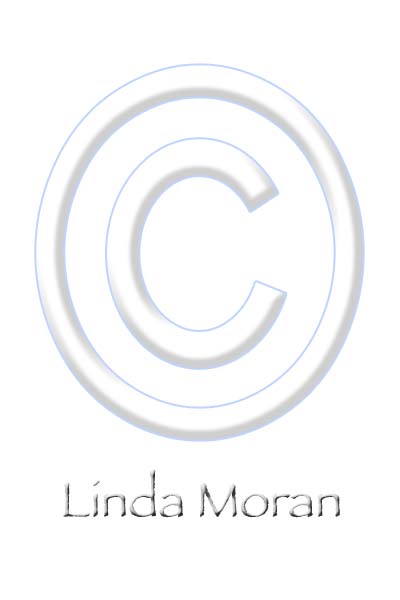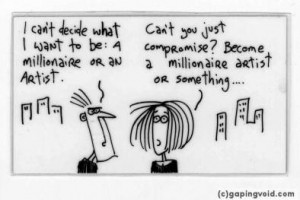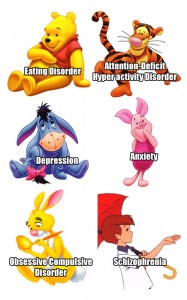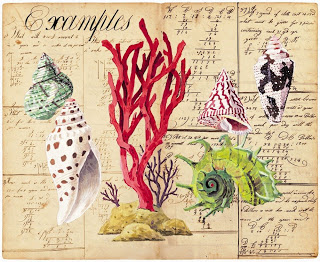Archive for the ‘art marketing’ Category
Saturday Special….Places to Find Us
![]() I had an Etsy store about two years ago, with a grand total of four items in it. I kinda let it go inactive, since I wasn’t doing anything with it. After doing tons of marketing reading last spring and summer, I reopened the store, still not quite sure what I would be selling in it. I started with a few marbled cards from my digital work, put up some marbled remnants, and then I had a bit of an epiphany.
I had an Etsy store about two years ago, with a grand total of four items in it. I kinda let it go inactive, since I wasn’t doing anything with it. After doing tons of marketing reading last spring and summer, I reopened the store, still not quite sure what I would be selling in it. I started with a few marbled cards from my digital work, put up some marbled remnants, and then I had a bit of an epiphany.
I’m selling art on the website, why not also list some of that cool stuff in my Etsy store? So I did…and then I realized I could list some great art cloth fabrics, and write better descriptions and provide better pictures. And…I sold a piece of hand-marbled art cloth that had been listed for maybe an hour.
Cool. It’s a gorgeous piece of fabric, and the picture doesn’t really do it justice at all.
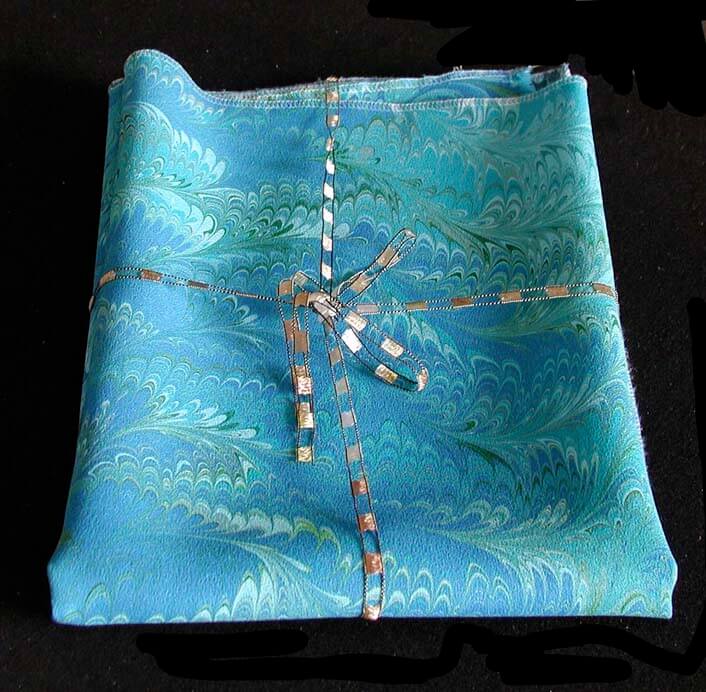 But I had the nicest message from the buyer: I have no idea what I’ll do with this shimmer of color, but I will honor your work and its beauty.
But I had the nicest message from the buyer: I have no idea what I’ll do with this shimmer of color, but I will honor your work and its beauty.
Wow. How cool is that? I know this amazing piece of fabric is going to a good home, because I always wonder about my babies and where they end up.
I will say there are other great piece in my Etsy – pieces I’ve held on to because they’re so gorgeous, but I also know the reality is I will probably never get to make anything with them. As it is, I put three pieces back in the drawer for me and “someday”…and I’ll be listing a few more tomorrow.
Ebay continues to be slow but somewhat steady. I’m sure the economy isn’t really helping us, but hopefully the holiday season will be better to us. Cafe Press – well, it takes time to rotate items and create the graphics for them, and time is one thing I don’t have a lot of these days. Plus, I gather from all that I have read on Cafe Press that you have good luck with sales if you have an active store – not something we can budget for at this time.
I would love to hear from all of you out there who are running your businesses on the proverbial shoestring. How do you decide where your dollars go? What have been good outlets for you? And how do you maximize every dollar spent?
PS – Newsletter will go out sometime this week. If you’re not a subscriber, you won’t be entered for a chance to win some marbled fabrics. Check the box at the top for more information!
Top Ten Tuesday – Cool stuff on the Web
 Ya gotta admit, that’s a catchy picture….the slippers on first glance look like little aliens checking things out. But this indicates it’s something cool from Dumb Little Man, which readers of the Tuesday posts will know always has something cool. This one is 30 Ways to Make TV Watching More Productive. There are some really great ideas here…for you sewing folk I would add “seam ripping stitches” – productive and therapeutic!
Ya gotta admit, that’s a catchy picture….the slippers on first glance look like little aliens checking things out. But this indicates it’s something cool from Dumb Little Man, which readers of the Tuesday posts will know always has something cool. This one is 30 Ways to Make TV Watching More Productive. There are some really great ideas here…for you sewing folk I would add “seam ripping stitches” – productive and therapeutic!
 Also from Dumb Little Man, 61 Ways to find Inspiration When You’re Stuck and Feeling Down. We can always use a little practical inspiration. Number 13 suggests browsing through Flickr photos, which I have just started to do – serious eye candy. If you want marbled goodies, here’s our Flickr site:
Also from Dumb Little Man, 61 Ways to find Inspiration When You’re Stuck and Feeling Down. We can always use a little practical inspiration. Number 13 suggests browsing through Flickr photos, which I have just started to do – serious eye candy. If you want marbled goodies, here’s our Flickr site:
 From Maria Brophy comes How to Create Anything Even When You’re Scared, Inexperienced, and Don’t Believe in Yourself. It’s a mouthful, but it’s all about baby steps….
From Maria Brophy comes How to Create Anything Even When You’re Scared, Inexperienced, and Don’t Believe in Yourself. It’s a mouthful, but it’s all about baby steps….
From PlugIn ID comes a great article on the butterfly effect, quoting Gandhi saying “Be the change you want to see in the world.”
Problogger is a great source of ideas for writing a blog. Here’s some info on making it easier for customers to buy from you. Great ideas here.
Here’s some fabulous fiber art to look at – the fabric collages of Wycliffe Lincoln.
 These guys always have great stuff – I’ve posted from them before. This is 60 Creative Examples of Infographics. If you like data presented in a very visual manner, check this out.
These guys always have great stuff – I’ve posted from them before. This is 60 Creative Examples of Infographics. If you like data presented in a very visual manner, check this out.
 Now who among us hasn’t given some thought to making art from Post-Its? I create little cubes when I’m bored, but this kind of goes waaayyy beyond that! Check out Georgia O’Keefe…..
Now who among us hasn’t given some thought to making art from Post-Its? I create little cubes when I’m bored, but this kind of goes waaayyy beyond that! Check out Georgia O’Keefe…..
From Selfgrowth.com comes a really helpful article on pricing digital painting, something I’m becoming very interested in.
And finally, treating yourself like a Ferrari – something we should all do!
What have you found as you’ve been surfing?? Pass it along – I love looking at new stuff!
Monday Marketing….So Many Outlets, So Little Time
This has been my latest project. Rachel of Rayela Art does an amazing job, having only started this in February. Members include working artists, textile businesses, galleries, suppliers and other fiber/textile people. All have an established web presence. Our common connection weaves us together: a love for textiles and fiber art. Getting this together was not an easy task…biographies, store links – there is a LOT of thought put into developing this, and the site is getting a lot of viewers.
I’ve been analyzing all the various areas where I have a presence – some stronger than others. There will be an Etsy group on the Textile and Fiber Art list, and I am looking forward to being mentored, as I need assistance in creating a good Etsy shop. My current shop has a dozen items (as of tomorrow night), and part of what I was stressing over was creating new work just for my Etsy store. Well, duh – it occurred to me that I could list some of the work from our website that gets admired, but no one thinks to buy. So we shall see……
Now along with this was getting the connections to Twitter and Facebook and the Facebook fan page…all of which require time. It’s a good thing I have some basic computer knowledge and can find my way around the web and individual sites. Some just aren’t as intuitive as they could be……But I think Facebook is now linked to my blog, my networked blog, my Etsy…..
I’ve just begun to look at ArtFire as another outlet, but I need to read about that more. I can’t add widgets for Cafe Press and Ebay because I am still using just the free listings for Cafe Press (limited items) and weekly auctions for Ebay. I know you have to spend money to make money, but a store on Cafe Press and Ebay costs additional….need to make good use of marketing dollars, as we still need to buy supplies to continue to make art to sell in these various outlets.
I did enjoy yesterday – spent the majority of the day at the computer, working with Photoshop on some new images, writing bios, and looking for a pic of hubby and moi for the TAFA site. Those of you who know me know it’s not really a current picture, but it is a good one!
Had a great time doing all this yesterday, and then it’s always coming down to reality when Monday morning hits and it’s back into the classroom. I also got the new newsletter out – special on Sampler Package 1 – 20% off….check it out – perfect for collage, mixed media, small quilt projects….
Didn’t get to read my blogs this weekend, and I miss knowing what people are up to. But I do have some good stuff for tomorrow’s post on the Top Ten on the web this week. Stay tuned for Wednesday with unveiling of two pieces that are either home from shows or aren’t traveling to any at this point.
Make art this week! Tell me what you’re working on!
Monday Marketing – The Importance of Names
Once again, over on Fine Art Views, Moshe Mikanovsky has a great topic. As artists, should we change our names? Interesting food for thought. Here ya go!
Visual Artists: Would You Change Your Name?
by Moshe Mikanovsky
This article is by Moshe Mikanovsky , Regular contributing writer for FineArtViews. You should submit an article and share your views as a guest author by clicking here.
Actors have Stage Names. Authors – Pen Names. Even wrestlers are known by different name, a Ring Name. So what is it about visual artists that does not make us change our names for the trade?
Historically, throughout the Renaissance period in Italy, some artists had nicknames that stuck. Like Donatello, who was born Donato di Niccolò di Betto Bardi, Tintoretto whose real name was Jacopo Comin, or Boticelli – Alessandro di Mariano di Vanni Filipepi. Another culture that produced art names is in the East Asian countries, where Chinese, Japanese and Korean artists receives names based on their level of proficiency and experience in their trade. In the modern ages though, visual artists are not known to change their names in order to promote their brand.
Some of the reasons artists might want to change their name for could be:
· Uniqueness – My art teacher and mentor, artists Gary Smith, told me once: “I have a very bad name for an artist. But you have a great name”. Although a talented artist with unique style and an amazing art coach, Gary was worried that his name doesn’t help him to become unique, above the rest. But with a name like Mikanovsky, he proclaimed that at least that will help me stands from the rest…
· Privacy – Some artists prefers to keep their private life separate from their public life. Especially nowadays, with the Internet and data overflow, some people are anxious about putting their name out there (for different reasons that we could discuss in another post), so they might prefer using another name or a company name.
· Different styles – one of the challenges for prolific artists that developed more than one style or artwork is to keep their artistic portfolio consistent. Authors who write in different styles usually adopt a pen name for the different style. That could be a solution for some artists, but it might create a huge marketing headache.
· SEO (Search Engine Optimization) – as a topic close to my heart, this was the reason that triggered me to think, and write, about this topic. One of the things that artists and marketers learn about SEO is that the keyword that mostly used to find them is their name. Imagine a contemporary artist named “Picasso”. Would we ever find him on the first or second page of Google? And what about my mentor Gary Smith? The combination of a common surname and given name brings many results that are not relevant for the search we are looking for. And another example, my friend, artist Myriam Levi. You might notice the spelling of her name, Myriam with “y”. Everyone who looks for her usually would search for Miriam Levi (with “i”), and therefore can’t find her. Would it better if she changes her name’s spelling?
There are other reasons why performance artists change their names, like ethnicity, ease of use, relevance to the image they portray, ease of remembrance, family connections, and guild and association rules (read more about it in Wikipedia), but these seemed to me a bit less relevant for visual artists. But I am sure there could be other reasons that artists might want to change their names, or different ways to look at it.
So I’ll leave this open to you – the visual artist – would YOU change your name?
Cheers
Moshe
———————————————-
This article appears courtesy of FineArtViews by Canvoo,
a free email newsletter about art, marketing, inspiration and fine living for artists,
collectors and galleries (and anyone else who loves art).
This article originally appeared at:
http://fineartviews.com/blog/22403/visual-artists-would-you-change-your-name
For a complimentary subscription, visit: http://www.fineartviews.com
Monday Marketing – Using Social Media
It has been an interesting activity, pulling together your social media efforts. Between Facebook and Twitter, a lot of time is involved in getting your brand and business out to the public. and I haven’t even started with LinkedIn and any other social outlets.
Then factor in an Etsy store, Cafe Press, and Zazzle…and then there’s Artwire and several other outlets. In fact, the Sunday NY Times had an article about artists using social media and online outlets to get their work before the public. Lots more places out there to explore.
Also you have your newsletter development and subscription list. You need to develop a customer base. Readers of this blog know we had some difficulties for two years with our marbling. During that time we let go of all the things we had been doing on line to market our fabric. It took us a while to realize that everything the marketing experts are saying you should be doing – well, we were doing that, and now we’ve gone back to it.
All of this takes time, and it takes a concentrated strategy. If you are planning to go in this direction, you will have a lot of work to do initially…and then you have to plan for all your follow-up.
Case in point: I have my personal Facebook page, as well as a Fan page for Marble-T Design. I carefully read and respond on my Facebook page each day as I see interesting things. That’s not a problem. To keep a concentrated message on the Fan page takes more time. I’m listing what I want to have for each day, so I’ve already thought through the week.
Twitter takes a lot of time. I’m still trying to read a portion of messages every day, but with being in school, that’s going to be very difficult. Thanks to TweetDeck I can schedule business messages for the week, but that takes away from the “conversation” that is Twitter. However, that’s what I will need to do while I’m still teaching. And it is driving traffic: last week I scheduled tweets about various items for sale in Ebay and Etsy. I certainly had more traffic to both of those sites, and I can see the difference in visitors to the items I tweeted…but nothing is converting to sales yet, so i need to process that.
Then there are blog posts…you want to stay timely. While I can schedule my blog posts ahead of time, I enjoy writing, and since I have a schedule of topics, I want to be able to write each day when I geet home from school. And I love reading and responding to comments. My problem with the blogs is going to be staying up with Google Reader and the blogs I follow. I always find great articles and amazing eye candy…but you have to find the time. Staying up with your blog reading I think is critical; I enjoy the people I follow, they are helpful, and I learn a lot – well worth the time for your business.
I had started a business class last January, and there was some gret information there. But to do everything that was suggested made me realize within a couple of weeks that I couldn’t do it all and still maintain my teaching responsibilities. That is what has been so wonderful about the concentrated time this summer: time to do all the set up and learning. Some of these things are not easy to do…like my first newsletter with Constant Contact. There was a steeper learning curve than I would have liked, but I mastered it, and now my newsletters won’t take nearly as long to do.
And don’t forget – we still need to create our art.
Speaking of newsletters, you should subscribe to ours (upper right corner). We do a drawing for a free sampler pack of marbled fabrics, but you can’t win if you don’t subscribe!
Monday Marketing
How did it get to be August? We returned from vacation on June 21st, and I started working on the business on June 23. A lot happened, I can tell that from my sheets of lists, but part of me is thinking, Oh my, so much left to do before schools tarts again.
One of the marketing things I did over the weekend is to make a list of what has to happen with social media for each day, once school starts. I have gotten so many things in place that I was swimming with all the details. Once I took the time to think about how I could work with these pieces each day, in a 30-minute time block, I could feel the stress start to diminish. This looks to be very do-able, and I have this week to make refinements.
As you can see from the graphic on the left, I was busy getting this symbol ready to attach to artwork on line, which means going back and protecting a lot of my earlier images. I did some reading about the legalese that should be on our blogs and websites, and I know now what I need to take care of – pronto. The logo is transparent, done in Photoshop, so I can just add the layer to my images. The problem will be actually getting to the images from earlier posts.
Another thing I did was to start a master list of the “long-range” projects for the next five-six months. Anything on the list this week is a priority – like a new newsletter – before I go back next week. This list will go above the sewing table with reminders of what is coming next. I find it is very helpful to do this type of exercise, primarily because now I won’t have to spend the mental energy trying to remember everything. Items on the list:
* Affiliate information and applications
* Licensing information, pattern repeats and developing a collection
* Spoonflower.com for printing fabrics
* Zazzle.com artwork and potential items
* Cafe Press items in preparation for the holiday season
* An Etsy store
* A tutorial on quilting marbled fabrics
* Feedback pages
* Updating links (and collecting new ones, so send yours along) on the website
* Linked In
* Update the Polyquilt pattern
* Confer with an attorney to vet all the legalese (copyright notice, disclaimers, FTC guidelines for affiliates, privacy policies, just to name a few)
* And…foremost with all of this – to continue making art.
What’s on your long-range list?
DON’T FORGET – sign up for our newsletter to get entered into a drawing for a Sampler 1 package of marbled fabrics! See the sign-up at the top of the page.
Top 10 Tuesday – Plus 5…A Busy Week on the Web!
It has been a busy week on the web for marketing. Two weeks ago in a post for Top Ten Tuesday, I had a number of comments about how helpful some of these marketing links are. I hope this is my way of giving back through my blog, with some of the best information I am finding as we artists navigate our way to building a viable business. I didn’t post last week, as these posts take a lot of time, as I want to have pictures from each site to enhance the appeal of this blog and make your reading experience more enjoyable. At the bottom I’ve given you a couple of links back to other Top Ten posts for your information.
* From Fine Art Views, the Triple Impact. Keith Bond describes this as Triple Impact or the 3-2-1 Impact.
3. The work catches your attention from afar and draws you in.
2. The work holds your attention from normal viewing distance.
1. The work delights and captivates you upon close inspection.
This resonated with me, as one of our early pieces (which we just don’t have a good pic of, so scroll down to the bottom) is The Wave – marbled on blue cotton. From a distance you see a huge rolling wave. The closer you get, the more you see of the texture of the breaking wave, until you are right on the piece, watching the wave break. This was our first piece where I realized it worked from close up and afar.
* Also from Fine Art Views, “Say the Right Thing.” Interesting look at comments from viewers of your art – what’s the intention behind what might seem like a stupid comment. If you’re serious about your art and not following this blog, you need to do so.
* Stock Xchng – the leading free stock photography site – free photos – since good blog posts are also very visual.
* Blu – you just need to go to this site – some very cool journal sketching – loads of ideas….someday I will actually do this!
* From the folks at Wishful Thinking comes “Why Artists and Creatives Have an Unfair Advantage at Internet Marketing.” This is not something we artists would think is working for us…very interesting article and worth the read.
* Six Facebook Applications to Sell Your Products – I am learning so much as I surf! I didn’t know you could set up a store on Facebook….
* Top 10 Features of a Winning E-Commerce Site – got your privacy statement? Got legal in the works? Lots of things to think about here.
* Three reasons You’re Not Charging What You’re Worth – from The Launch Coach – as artists we really undervalue ourselves…again, some very good points here.
* Art Licensing: Achieving Brand Recognition. Joan has a great blog if you are interested in licensing your artwork. But you need to know what your brand is before you start….
 *
Mike’s Life – 11 Things I Learned When I Became a Professional Blogger. So many of us blog and are thinking about going “professional.” So just what does that mean??
*
Mike’s Life – 11 Things I Learned When I Became a Professional Blogger. So many of us blog and are thinking about going “professional.” So just what does that mean??
* From PluginID – 7 Luxuries You May Forget You Have….like running water. We all need to read this periodically.
 * Also from PluginID – How to Live on Your Terms – very interesting idea, and those of you who are journal artists are way ahead of the rest of us.
* Also from PluginID – How to Live on Your Terms – very interesting idea, and those of you who are journal artists are way ahead of the rest of us.
* Joanne Mattera ArtBlog – Co-op galleries and vanity galleries – a look at both, and artist beware.
* Maria Brophy – 10 Questions to Ask Before Hooking Up Your Art with a License. Distribution channels, top retail clients, product categories, distribution markets, and so much more.
And now, just for fun…. from The Best Article Every Day – go see the big version!
Let me know what interesting things you found on the web this week!
Another Top 10:
Monday Marketing – Guest Post via Tara Reed and David Darrow at Art Licensing
I have been very interested in licensing my art images for quite a while. I’m doing a LOT of reading, as it is a complex issue. The first source I found that got me started in the right direction was Tara Reed’s Art Licensing Blog.* I confess at this point I am still in the reading stage, but slowly moving in the direction of working on patterns, repeats, and mock-ups. Funny how full-time teaching gets in the way….
However, I am a firm believer in doing my homework. One of the things the “big boys” in internet marketing talk about is the actual format of your blog, and that the recommended format is Word Press. I was wondering about why the need to move from Blogger, and I was disconcerted when I learned I would have more difficulty protecting my images on Blogger. So when I had this opportunity for a guest post from Tara – and David – I thought this would be appropriate. Plus, as Tara mentions below, I wanted something classy for my blog.
Tara writes: David Darrow has been in my online life from the very beginning of this (Art Licensing) blog… he was one of the first subscribers to my Art Licensing Info eNewsletter and I remember him sending one back to me with a note: “Do you realize this is what this looks like?” That was when I was “following directions” and keeping it all text, never more than 70 characters per line, like I was told to do.
David wasn’t the only artist to think this was a BAD IDEA so I realized artists want something a little more visually pleasing. David helped me figure out how to do it. A talented artist and techie – he’s passed on more good information that I can “Share with the group”. When he was listening to the replay of last week’s Ask About WordPress for Artists call (do you have your copy yet?) he sent me the following information that I thought would be helpful.
He knows of what he speaks since he has a blog – on blogspot – called “Where art meets technology”…
I believe there is a misconception about Blogger vs. Blogspot.
Even that phrase is misleading, because they are the same thing.
The best way I understand it is that
1. Blogger is the on-line tool which allows one to create new
2. posts, which are individual, chronologically ordered in reverse “entries” or “posts” in your
3. “blog,” which is your journal, diary, log or web-log, from which we get the word [we]blog.
Blogspot is actually blogspot.com, a domain where all the Blogger-created blogs are stored or hosted.
You cannot use Blogger to create a blog and store that data ANYWHERE else but on blogspot.com — Both are owned by Google. Additionally (corollary) you cannot create/edit a blog with any other tool but Blogger and have it stored or hosted by Blogspot.com .
***Every Blogger-created blog is stored as a unique “subdomain” of blogspot.com , which is why every Blogger blog address has in common “blogspot.com.” A subdomain is the unique “areacode” that comes before the phone number, and the phone number is always 2 items: domain name and venue, “terareeddesigns” and “com” — you could have a separate site at store.terareeddesigns.com ; it would be a “subdomain”
Like Kim said, one issue to consider is that all Blogger.com blogs cease to exist the moment Google decides to stop supporting them. WordPress blogs will only disappear if you delete them or stop paying your domain-hosting bill. You control that. If WordPress.org disappears, you will still have all your data and your most recent installation of the version of the code that runs it.
Wordress.org is a group of programmers worldwide that work together on standards for an Open Source blogging service. WordPress.com is a Blogger-style tool that allows a simpler blogging method and can raise money (through more premium blogs) for WordPress.org costs.
One other thing; people with Blogger.com blogs VERY often misaddress their blogs, adding a “www” ahead of their blog address. Both will work, but one is wrong.
http://www.EverydayPaintings.blogspot.com is wrong
http://EverydayPaintings.com is right
Thanks David!
Learn more about David Darrow at www.DaveThePaintingGuy.com
Be sure to check out his painting classes too – I’m told they are amazing!
Here’s to your creative success!
– Tara Reed
P.S. To learn more about how to earn an income licensing your art, visit www.ArtLicensingInfo.com* for a wide array of free and for-fee information from experts in the industry.
* FTC disclosure: any links with an * is an affiliate link and if you make a purchase, I will earn a commission for the referral. This helps me keep buying art supplies – thank you for your clicks!
Thursday Thoughts – 7 Steps to Niche Marketing
It has been a very busy July for marketing and the business. I think those of us who are artists wonder at times about 1) the need to market, 2) continuing to make our own art, and 3) how we pull it all together. I sure don’t have all the answers, but I think at this point I have some insights on the process.
* You need a plan. You may not know what you’re going to do in the plan, but you need one. Sounds contradictory, I know, but you can make it work because part of your plan is to plan your plan. At this point my high school students would look at me and say “Huh?”
* You need to set aside time to read about marketing. What should you be doing? What tools should you be using? Set a deadline, so you don’t spend months at this stage, like I did until I finally started to do some of the things. When I ran my learning center and we had no money, I would do what I called “shoe leather marketing.” I was out talking to everyone I could about our learning center. Nowadays that “shoe leather” is social media, so spend time learning about that. You don’t need to be a net nerd for this step – there’s lots of available materials to read to get you started. Look at Social Media Examiner for a quick tour of Facebook and Twitter and what you need to do. Read Problogger about setting up and running a successful blog. Buy a book or two…or sit with a coffee in Borders or Barnes and Noble and browse the books.
* Set up Twitter and Facebook and start posting. Set up your blog and start posting. Read other blogs and start commenting. This becomes very important as you write more and create more of an active social media presence.
* Make your art. There is no point doing all this if you have nothing to offer the public. In our case, we have already established a few outlets: Ebay and website. Our website has a gallery with art work available for sale. Ebay has small pieces of fabric for buyers to create their own artwork.
* Decide who your customers are. This was a big issue for us, as a result of all the reading I did. I want to sell our larger artwork, but we have a great market in selling small pieces of marbled fabric for others to use in their creations. The more you read about selling on lie, the more you will see the suggestion to develop a product to “launch” and make money. I stumbled with this one. What would I do? Then came the proverbial 2 by 4 over the head – we already had customers. I needed to refine what we had already been doing. Consequently we continue to sell our fabric as well as put our artwork out in shows, galleries, and on line. It’s not an either-or. I am after art collectors who like fiber and mixed media, as well as quilters and crafters who like to do their own thing. Two worlds come together.
* Just do it. To quote Nike, nothing’s going to happen if you don’t do it. Just thinking about it will give you lots of ideas…and will make you go nuts in the “to-do list” department. (Ask me how I know this….) But there comes a point when you have to do it. Then…..
* You need a plan. Yup, all over again. I have discovered that I will need to have a very set plan for how to handle all of this once school starts again and my art/marketing time is limited. So over the next two weeks I will set up a calendar: 1) what gets posted each day, 2) when to write and schedule the blog posts, 3) how to schedule Twitter posts, 4) maintaining the Facebook Fan page, 5) writing a newsletter, and 6) making art.
I’ll keep ya posted! Any suggestions????
Monday Marketing – Art Display Systems
As promised, here is the third part of Moshe Mikanovsky’s articles on preparing for art fairs. This third part looks at display systems, complete with pictures. This is great stuff! i did the same thing at an art fair – I went around and snapped pictures (with permission) of the hanging systems I saw. This is one of those areas we just don’t pay enough attention to until it is actually time to display our work. I know that as I develop more of my marbled pieces, I am more conscious of how it should and will hang as I construct the piece. So enjoy!
Art Display Systems for Art Festivals
by Moshe Mikanovsky
This article is by Moshe Mikanovsky, Regular contributing writer for FineArtViews. You should submit an article and share your views as a guest author by clicking here.
Last time, in My First Art Fair Checklist – Follow Up, I promised that I would dedicate this post for the display system at the art festival (or art fair, whichever term you prefer). My display system was of the “Made in Home Depot” variety and couple of readers commented that I should really invest in proper, professional display system.
I do agree that professionalism is key and important in displaying yourself as an artist, the respect you give your creations, and the respect you want to get from everyone viewing, and more importantly, buying your art.
But, and here I want to list several reasons, there are quite legitimate reasons why you may want to go a different route, not the most conventional or “academically” professional:
· The budget factor. Not trying to raise the worn mantra that we are starving artists, therefore we can’t afford spending money on a professional system, some of us still have budget constraint. Whether it is your first experience doing an art festival and you want to try it out before you spend into it, or you honestly prefer to spend your budget on quality art materials and framing to create the best art you can possibly do, your budget might be squeezed and not much left for the display system – which is really, just the background for your artwork.
· Do it differently. We like to say that artists can break every rule and still make great art. So why not with how you display your art? I have seen several displays that were just different and unique and that made me want to look at them. But maybe that’s not the best thing since the idea is to focus on the art really…
· Practical means. Some DIY display systems are much easier to carry and transport and therefore could be ideal for artists who travel far, don’t have a car, live in the city and use the subway/taxi/bicycles, or all of the above. Imagine trying to carry around on top of your art also a big display system, professional as it might be.
· Everything works. I have seen it myself, and I am sure many of you can testify, that also without the professional display system, artists sell their art! There are many reasons why art is sold, or not sold, at art fairs and festivals. But not having “the right” display is only one piece of the puzzle.
OK, so with no further due, here are few of the display systems I have seen during my first art show. I was amazed with the varied options I saw with only 90 artists showing in the park! I am sure there are many more excellent ways and when I’ll find more, I will keep you updated. So here we go:
The Double Twines
Couple of simple twines tied to the tent’s frame at the top and to the artwork’s back wire at the bottom. This is the simple version of The Double Chain (see below).
Pros: Very inexpensive and simple.
Cons: Can only carry one painting, which should be fairly light. Paintings sway in the wind.

Julia McNeely www.juliamcneely.com
The Double Chain
Couple of metal chains hang from the top of the tent’s frame. The hanging of the chains can be by cable ties (as seen in the pictures) or by double length of the chain wrapped around the frame. The artwork is hung on S hooks suspended at any of the chain’s links.
Pros: Inexpensive and simple. Can hold more than one painting on long chains.
Cons: I have seen paintings sway in the winds.

|

|
The Clothes-Lines
Two clothes-lines or similar twine is stretched across the width of the tent’s wall. The artwork is hanged off the clothes-lines using clothespins. Suitable for non-framed art on paper.
Pros: Inexpensive and unique look.
Cons: Might look too DIY/crafty. Doesn’t fit for all type of artwork. In this case the artwork are prints on wrinkle-free “peel and stick” cloth, so they are well protected and suited for this hanging system.

|

|
The Leaning Boards 1
Two 1”x2”x8’ wood strips, attached at the top with metal hinge. The top is leaning on the tent’s frame and the bottom is open couple of feet wide. Throughout the entire length of the wood strips, angled grooves were made in order to hang the art from. The wood can be pre-primed with white paint, or you can paint or leave natural. For extra stability, the top is tied to the tent’s frame with some twine.
Pros: Inexpensive and simple look. Can fit several paintings.
Cons: Stability might be an issue, but it seems quite stable. Need some DIY know how to make the grooves properly.

|

|

|
John Visser, http://johnvisserart.com
The Leaning Boards 2
Wide boards, in this case old barn boards (over 100 years old!), leaning on the tent’s frame. To protect the frame, a foam material was used to wrap around the frame where the board is leaning against it, and the board is secured with some twine. For hanging the artwork, wooden pegs were installed in equal intervals.
Pros: Looks really nice! Old barn boards are not a must, although they make the difference, having a very unique look. More than one piece can be hanged on each board, and as extra touch, another board was made into a narrow table.
Cons: I won’t go out of the way to find or purchase these old boards, only if I happen to have them lying around. Stability might be an issue if someone kicks the bottom of the board. Quite bulky to carry and transport. Some DIY know how is required to install wooden pegs.

|

|

|
Jennifer Toliver, www.jennifertoliver.ca
The Leaning Boards 3
This one is made of metal railing that already comes with some holes in them. The railing was tied to the tent’s frame with bungee cords. S hooks are used on the holes to hang the artwork.
Pros: Inexpensive and easy to install. More than one painting can be hanged on each railing.
Cons: The look is quite cold and industrial.

|

|
Nicky Hindmarsh, nickyhindmarsh@hotmail.com
The Fencing 1
A metal fencing stretched across the width of the tent’s wall, attached at the side with some cable ties. In order to make the fence more stable and not buckle in, a long and narrow strip of hard plastic was inserted throughout a section of the fence. S hooks are used to hang the artwork.
Pros: Metal fence is durable and can carry multiple art.
Cons: Also a cold look and a bit industrial.

Scott Brewster
The Fencing 2
Similar to Fencing 1, but using a plastic fencing. I have seen someone using the orange color fencing in the past and it looked terrible. So if you opt to use this option, try black or white.
Pros: simple and inexpensive.
Cons: Wear and tear might be high. Looks like a construction area.

The Framed Fence
In this more elaborate usage of the fencing, they were stretched over wooden frames, stapled all around with a staple gun. The frames are attached to the tent’s frame, and to each other, with cable ties. In this example the frames are quite tall – taller than the lower portion of the tent’s roof structure. The frame panels had to be separated with a gap in the middle to fit in.
Note the special feature of this setup – the noodles. In each wall mid-section, a twisted noodle in inverted U shape is attached to the fence with cable ties. The purpose of the noodles is to stretch the tent’s roof outward, so that any rain falling on the tent will immediately spill over and not remain on the roof. I believe this can be achieved with other systems as well.
Pros: Can hang many paintings in many configurations. Not too expensive to setup.
Cons: Seems bulky to carry and transport. Require DIY know-how.

Steven Crainford, www.stevencrainford.com
The Fencing Rollup
I personally loved this system! In this display the 3’x15’ plastic fencing roll was cut to 5’ lengths. Each length of 3’x5’ was attached to a 1”x2”x3’ wooden strip on each side using washers and screws. Couple of eyelet screws were attached to one of these wooden strips. These were used to hang the fence from the tent’s frame, using a couple of large size S hooks. Similarly it can be hanged with cable ties or bungee cords. The nice thing about this system is that each fence is rolled up nicely around the wooden strip for carry and transport.
Pros: Light and easy to carry. Inexpensive and fairly simple to assemble. Can hold several paintings, depends on the size.
Cons: Need to make quite a few of these to cover all three walls, which might defer the size advantage. If it is not required (as in the picture), then it’s less bulky.

Jon Muldoon, www.jonmuldoon.ca
The Concrete Wire Mesh
Concrete enforcement wire mesh size 4’x8’, hanged from the tent’s frame with twine. The artwork is hanged using S hooks.
Pros: Inexpensive and light weight. Can hold many paintings, depends on the size.
Cons: the wire mesh rusts very easily, so it must be treated somehow beforehand, either painted over with rust resistance paint, or some anti-rusting spray. Edges can poke and scratch you. Not heavy but still bulky to carry and transport.

Moshe Mikanovsky, www.mikanovsky.com
The Gallery-in-the-Park
A gallery hanging system is attached to a 1”x4” board of similar length. Eyelets screws are attached to the top of the board, which is suspended from the tent’s frame using cable ties.
Pros: Small and simple.
Cons: Depends on the gallery hanging system, only one row of paintings can be hanged. Might be more expensive than the average DYI system, but needed to be compared with other professional systems.

The Coat Hanger
This DIY coat hanger style system is constructed of a 1”x1”x8’ wood strip attached to a small board for a base. The base is held with a small weight and the top of the strip is attached to the tent’s frame with wire. Hooks are attached to the front in intervals.
Pros: Simple and inexpensive.
Cons: Does not look very stable or fit for big and heavy paintings.

|

|
Sheetal Sehgal, www.sheetalsehgal.com
The Stained Glass Window
This system is quite unique. It is constructed of a wooden frame, and metal construction built together especially for this purpose. It’s easier to have a look at the picture and see what I mean. The final look is of a stained-glass window without the glass. The artwork is suspended off the metal-work with S hooks.
Pros: Special look that gave the booth a unique design.
Cons: Need to be very handy to create. Heavy for carry and transport.

Liz Menard, liz.menard@utoronto.ca
As you can see, there are so many creative ways to hang your art in a tent! I didn’t even mention The Easels Field and The Professional Grids. I am sure there are many more ways out there. True, being professional is very important and everyone should strive to present their art in the most professional way possible but if you are on a tight budget, want to try what an art fair is all about, or just want to be a bit different, why not try one of these displays? And if you have more ideas, please share them with us; we would love to hear from you.
Cheers
Moshe
PS Thank you to all the artists who allowed my wife and I to take pictures of their displays and use them in this post.
———————————————-
This article appears courtesy of FineArtViews by Canvoo,
a free email newsletter about art, marketing, inspiration and fine living for artists,
collectors and galleries (and anyone else who loves art).
This article originally appeared at:
http://fineartviews.com/blog/20870/art-display-systems-for-art-festivals
For a complimentary subscription, visit: http://www.fineartviews.com
———————————————–
Monday Marketing – Art Fair Checklist
Two weeks ago I reprinted a post by Moshe Mikanovsky on preparing for an Art Fair. It’s a great post with lots of things to think about if you are new to doing art fairs. Here’s his Follow-Up Checklist. There is great information here based on his personal experiences. Next Monday you’ll read about the hanging systems he is using and is thinking about using. Enjoy!
My First Art Fair Checklist – Follow Up
by Moshe Mikanovsky
This article is by Moshe Mikanovsky, Regular contributing writer for FineArtViews. You should submit an article and share your views as a guest author by clicking here.
Wow! The time I had preparing and doing my first art fair was just amazing!
After writing “My First Art Fair Checklist”, I received many comments with some great tips, encouragements and well wishes. And it was well received. I felt that many of you were there with me, if not in presence, then in mind and spirit. I also had several visitors to my booth who commented on the previous blog post. That was awesome!
Ok, so now let’s get to business. Many of you were waiting patiently for my report about the show and how it went, so with no further due, here it is, my Lessons Learned:
Artwork
- I believe that my artwork spoke for itself. I received many excellent comments, so that was good.
- I didn’t sell anything though. Yes, I am not afraid to admit it, the same as I would not be afraid to tell you how successful I was selling million of dollars worth of paintings… I wish. Trying to understand though why I didn’t sell, I came up with a few ideas:
- My niche art didn’t fit most of the buyers. My art is based on religious subject matter or inspiration from my upbringing in Israel. Although I have paintings of trees and of the Zodiac, the other paintings might be a turn off for some.
- My unique style (which I did receive many comments on it) is still needs to be “understood”. Presenting for the first time, it takes time to build followers who not only like but also buy my art.
- Work on paper. I was told that people buy more art on canvas rather than on paper. All my art is watercolor on paper. I did have 4 small paintings in watercolors mounted on panel and covered with resin, which many people really liked, so I am thinking of creating more of these in the future.
- The show itself. Although the organization of the show was outstanding, I heard comments from other artists that were disappointed with their sales. One even told me that the show attracts many dog-walkers and baby-strollers and not the real art-buyers. But, I did see people buying art. So it might be only personal observation.
- Not enough marketing on my part. As much as I tried to market the show to everyone I know, only a few of my existing contacts showed up. I relied too much on the exposure of the new crowds that had never seen me before.
- Attraction of my tent. Although I really liked the end result of my tent, which you can see in some of the pictures I took, I did get some feedback from my mentor that my tent was “too clean” and not strong enough in a way of attracting people in. Maybe it’s true, I still have to think about it a bit more…
- People like to “find hidden treasures”. I saw how everyone loved sifting through boxes of matted artwork. The art that they didn’t see on the walls but had to go through in the box was hidden from them and attracted them. I will definitely try to have some in the future.
Tent
My tent worked out really nice! We did have prediction for rain, so I sealed the seams of my roof several days beforehand. I was very anxious about it, because I didn’t know if I did it right or not, but in the end, it was great. We only had rain at night between the two days of the show and water did not leak through, so I was very happy. One of my neighbors though had water leaking into her tent and she realized that the tent was not water resistant.
Putting up the tent and taking it apart was not too bad, although in hot and humid weather it was quite steamy inside. I kind of envied the artists who came to a ready tent that they rented. On the other hand, I saved few hundred dollars by borrowing mine and putting it up myself.
Although the organizers asked everyone to bring a white tent, several artists opted for other colors. Either they had the tents already or borrowed them. I still think white is the way to go.
Very important – before going home, always make sure that not only your tent is secure with weights in all 4 corners, but also all your neighbors on ALL sides are secure. And if they are not, insist that they don’t leave before they make sure it’s secure. Otherwise you might come the next day and see that your tent is standing nicely but the tent next door just moved a bit and maybe even collapsed on yours… So do yourself a favor, don’t be shy, befriend your neighbors, and insist that they do their job to make everything safe.
Display system
Hmmm, well, what can I say? As this was my most challenging item before the show, it was also most challenging during the show… Let me tell you why. The wire mesh I used was easy to install and looked quite nice. The problems started with the overnight rains and humidity in the air. The iron mesh rusted very quickly. At the morning of the second day I had to wipe all three meshes and the rust stains on the wall of my friend’s tent will never come off (we tried CLR but it didn’t work… maybe washing it somehow?)
I still got poked and scratched by the pointed edges of the wires.
The S Hooks had a mind of their own and it was sometimes a challenge to straighten the artwork. Drove me a bit crazy all the time, especially when it was windy and each painting was a bit tilted.
I saw many other excellent ways to hang the art. My next article will be dedicated for the other great display systems. It’s a topic that needs its own post.
Marketing
I handed out many business cards and postcards, so I am happy about that. I am sure I will have some returning clients for my paintings and/or my Giclee and licensed products (mainly the Ketubahs).
Many people looked through my portfolio, so I was happy to have it.
My little “marketing surprise” was the shirts my wife and I wore during the show. That goes to one of the discussions in the last article’s comments, regarding what to wear (professionally vs. fitting the crowds). I opted to do it like in trade shows – wear a white shirt with my logo and name, and my website on the back and sleeve. I also had a 3rd shirt on the table, which I put out for a drawing for all the people who signed my guestbook for my newsletter.
And speaking about a logo – the image of the Leo from my Zodiac painting was everywhere – my business cards, my tent’s sign, my shirt, the cover of my portfolio, and online it’s on my blog , newsletter and my avatar as well.
Other supplies
In addition to the list I published last time, I got some new items: 4 weights to secure the tent, work or garden gloves, first aid kit with band-aids and Polysporin, business cards’ and fliers’ holder, pouch for money and other valuables, bungee cords, camera, paint-pen to fix scratches on frames, measuring tape…
I want to thank everyone for their support. As a way of appreciation, I put together a checklist form, “My Art Fair Packing List”. Feel free to download it and use it for all your future events. And be nice, play it forward, and share with others.
Cheers
Moshe
———————————————-
This article appears courtesy of FineArtViews by Canvoo,
a free email newsletter about art, marketing, inspiration and fine living for artists,
collectors and galleries (and anyone else who loves art).
This article originally appeared at:
http://fineartviews.com/blog/20487/my-first-art-fair-checklist-follow-up
For a complimentary subscription, visit: http://www.fineartviews.com
———————————————–
Thoughts for a Thursday – Marble-T Design
While on vacation, hubby and I had plenty of time to talk about our marbling business and how we wanted to proceed. Readers of this blog know we went through some very difficult times as we had problems with marbling: nothing worked – water, paints, fabric finishes – nothing. Prior to this time we had an active business, with a mailing list of about 300 people, and a list of products that sold each month fairly well. Once the art problems hit, at the same time I changed jobs, and time became a real premium.
Fast forward to now, and I am spending lots of time reading and researching how to build our business. About two weeks ago, on the road in Tennessee, I had one of those “2 by 4 on the head” moments, when I realized that everything the internet marketers tell us we have to do to build an online business we had been doing years ago. So I have been spending time updating, revising, incorporating social media (which wasn’t around when we went online in 1998…). I have learned a HUGE amount, I have loads more to do, and most importantly, I am having fun, as well as meeting lots of new and interesting people. I am glad that I am on summer vacation right now, and I don’t need to take classes or teach any remediation, because building this business is taking a lot of time.
So what does an art business need? We have a website that has gone through several versions since 1998 when the learning curve was EXTREMELY steep. It has again been updated by our amazing web designer Suzan at Saltwater Systems to reflect new fiber work, some of our digital work, and some new products to be released within the next two weeks. It is now easier to sign on to follow our work through our newsletter.
We did a lot of work off the website way before blogs, but blogging makes it a lot easier to update and refine offerings. Plus, I like being able to write about and reflect on new work, especially as our digital marbling (TN) increases. Now on our blog, Marbled Musings, you can follow updates to the blog, as well as sign up for our newsletter.
Social media has mushroomed. I’ve been on Facebook for about two years, and I have loved getting back in touch with former colleagues and students, as well as meeting and reconnecting with other artists. I am learning about Fan Pages and am just beginning to experiment with one. If you are interested, sign on to follow Marble-T Design on Facebook. Pretty soon we will have a button you can just click.
Now Twitter….this is really interesting. My students make fun of me for being on Twitter, but I tell them I am way ahead of them in this piece of technology, especially when it comes to business. I am not always logging on with information about what I am doing, but I do enjoy the resources that are posted. Following the NY Times arts columns has led to some great artists. If you’re in to Twitter, you can follow me @ArtsyLindaMoran. (And there wil soon be a button….)
Have I made any art lately? No, and that is by far the downside to building a business and doing the necessary marketing. I worked on a few pieces before I left for vacation, and there is time next week built in for working on art. My goal is to have the business running smoothly within the next four weeks, and then I will carve out the art time throughout the school year – a tough task as any artist knows who has to share creativity time with the job that pays the bills.
I am very interested in what all of you do. Comment about how you’re building your business, what you have found that works, and anything in particular you know HAS to be done. Love to read your comments.
AND….giveaway this weekend with Blog Post 400 – I promise you it’ll be a good one!
PS – a popular post about Martha Stewart and her “marbling” – this ran a year ago as we were just coming out of our hard times marbling, and I was incensed at how she tried to put her spin on this ancient art!
Top Ten Tuesday – What’s New on the Web in Marketing
This has been a really productive week for marketing – mostly all the lose ends that we need to do to move our businesses forward. I haven’t had a lot of time for art-making this week, as my goal for the end of June and July is to do everything on the “list” to have the business ready to go for this coming holiday season, before teaching starts again in August. Lots and lots of thinking has led to this point, and now I actually have the time to do these things! That said, here’s some cool stuff I have stumbled on this week on the web as it relates to moving our art along.
* The World of Apple – “Invincible Apple: Ten Lessons from the Coolest Company Anywhere.” I have been an Apple user since 1989, and I’m on my 4th Apple (I make them go a looonnngggg way). This is a look at how Jobs and crew – mostly Jobs – makes the Apple brand so powerful.
* Tara Reed is an expert in art licensing. This is a listing of her ezine articles for those of you interested in looking into licensing. She has loads of information to help you navigate a HUGE field. Here’s her website for more information.
* Lateral Action – creativity plus productivity equals success. Here’s a recent post on things you Do and DON’T need to sell your art.
* All Art Licensing – again, great info if you want to look at licensing your designs. J’net Smith made Dilbert a phenomenon.
* Blurb – a great way to make a portfolio of your work, plus loads of ways to get marketing materials based on your own designs.
* Problogger 52 Blog Tips to Kick-Start Your Blog – good all year round, if you’re having problems getting your blog off the ground.
*Art Calendar A must for any artist – see what’s new in shows and opportunities.
* Social Media Examiner – Your Guide to Social Media – sign up to get the Twitter tutorial, which is extremely helpful.
* 100 Best Places to Appreciate Art Online Galleries, Porffolios, artist sites – look at what’s new in the art world.
Number 10??? What have you discovered this week on line that could help your marketing? Let me know!
Top Ten Tuesday – A Week on the Web

I have spent the day so far at the computer, cleaning out old emails, answering emails, updating links – all the stuff you put off doing. However, there has been some amazing stuff I’ve discovered on the web this week – loads of eye candy! So sit back and enjoy!!
* This first is an amazing marbling video by a Turkish master. I was stunned by it – so different from anything I have seen, and so masterful in technique. I should live long enough to be able to do this!
* The Guild of American Papercutters – not a great website, but the gallery has some really amazing photos. I fell in love with papercuts when I watched a master in Shanghai create a lovely cutting of a girl, with just scissors and his own eye for detail.
* A wonderful artist – Harrison Howard from San Diego – vibrant paintings, some interesting Asian influences. His shell series are quite wonderful. I tend to really like vibrant colors (I think the school is “colorist?”), and these really do it for me.
*
Clark Little surf photography – words will never do these images justice. The waves, the curls, the movement – you will drool at each image.

* Human Computation – another YouTube video. You know those made-up words we use for encoding to prove we’re really human? Luis Ahn explains how we are helping to digitize books each time we type them – really fascinating!
*
The Scribbler – just downright fun to play with – your own scribbles, and you can upload them into an online gallery.
*
Art Licensing Info – an interesting resource as we start doing more marketing. Free download e-book on getting started with Twitter.
* 3-D Street Art – more street painting – really great stuff, with how-to photos. Couldn’t figure out how to get a photo to post!
* China’s Olympics Light Creative Flame – interesting article.
* The Power of One – a fabulous video – we can all be instruments of change for the better. Check out additional videos.
Organization Queen!

I have said several times before that I don’t want to miss opportunities this year – I want to market and take advantage of what happens through increased marketing. But- I still need to be able to make art. I can see how a person can get pulled in several directions.
While I did work on some images over the spring break, I also spent a lot of time organizing myself. I figure in this way I can really plan out time for creativity, sewing, digital marbling, and the like. So I’m inviting you along on this organization/creativity journey, with some goodies along the way. Let me know what I am forgetting, and as I share plans, let me know any stumbling blocks. This size of show (even though a small gallery) is new for me.
First up, we have an art show at a small gallery in four years. I know, plenty of time, right? But time goes faster than we think, and there are four of us involved to coordinate. The organizer of the small gallery, attached to a small park, remarked that when she calls people a year ahead of time to set official dates, most say, “So soon?” That won’t be me! I spent about an hour yesterday with beginning planning. I’m the type of person who plans well, trying to anticipate anything and everything that is needed to make an event go smoothly (probably all those years of directing middle school theater!). Here’s the list – let me know what I have forgotten….
* Title for Show – several types of art – announcing a contest tomorrow!
* Framed pieces – fiber and digital
* Alternative hanging – does everything need to be framed?
* Tiles and sizes
* Cards/stationery
* Small prints
* Packaging
* Postcards for advertising
* Brochure for show
* Opening reception – once we have dates
* “Artist Weekends” – meet the artists
* Prices – for everything and how to split costs, sales
* Actual fiber pieces, existing and new
* List of Invites – both of us
* Publicity plan – not too soon to start getting ideas down
* Budget – split two ways
* Business cards – need to be sure have enough
* Websites updated for publicity
* Portfolio – serious update – could work on that now
* Overall timeline and deadlines – what I call backplanning
Other posts you might be interested in:
Marketing 101
Now What?






